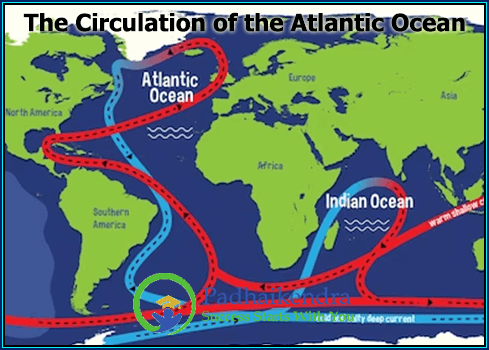The circulation of the Atlantic Ocean is driven by a combination of wind, temperature, and salinity differences, which create a system of interconnected ocean currents that circulate water around the basin. The circulation is known as the Atlantic Meridional Overturning Circulation (AMOC) and is responsible for redistributing heat and nutrients around the globe.
The AMOC can be broken down into two main components:
- The North Atlantic Current: This is a warm, fast-moving surface current that flows northward along the east coast of North America, crosses the Atlantic Ocean, and then splits into two branches, the Norwegian Current and the Irminger Current. The North Atlantic Current is a major contributor to the warm temperatures in northern Europe.
- The Gulf Stream: This is a warm, fast-moving surface current that originates in the Gulf of Mexico and flows northward along the east coast of the United States before crossing the Atlantic Ocean. The Gulf Stream is one of the strongest currents in the world and has a significant impact on climate and weather patterns in the North Atlantic region.
In addition to these two major currents, the AMOC also includes a number of other currents, including the Labrador Current, the Canary Current, and the Benguela Current. These currents play a role in redistributing heat and nutrients around the Atlantic Basin and are influenced by a variety of factors, including wind, temperature, and salinity differences.
The AMOC is also linked to the global conveyor belt, which is a system of deep currents that circulate water around the world. Cold, dense water sinks to the bottom of the ocean in the North Atlantic and then flows southward, eventually upwelling in the Southern Ocean. This movement of water helps to regulate global climate and is a critical part of the Earth’s ocean-atmosphere system.





